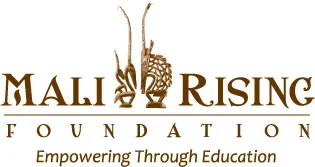By Merritt Frey, Executive Director
I know, it doesn't sound exciting. But it truly is.
All too often when I talk with someone about our work in Mali, they share frustrations with a project they were involved with in some far-flung country where all the good intentions fell into disarray. A well's pump broke. A classroom crumbled. A health clinic never received any staff.
Let's be honest -- it happens. That's why Mali Rising's long-term relationship with our 21 partner villages is so important. Because we stay in touch with the village, try hard to understand their challenges and obstacles, and tackle solutions as a team, all 21 of our schools are still in operation more than a decade into our work.
An important part of our partnerships -- especially as our schools age -- is an understanding about maintenance of the schools' buildings. From the beginning we make sure villages understand and embrace the fact that these are their schools and that they are in charge of day-to-day maintenance.
And generally the partner villages have done a good job with this responsibility. Our staff inspects each school regularly and scores it for maintenance. Where things are falling by the wayside, we encourage the village to take action and help if necessary.
But as our schools age, some projects are larger than the villages can tackle alone. And in some cases we add infrastructure such as solar panels to an older school. For these types of projects, Mali Rising and our donors take the lead with a 20% cost-match from the village.
This year, we've conducted several great maintenance projects. Here's a short run down on what we're doing to make sure investments our donors make last for the long haul:
1) At the Trujillo Family Middle School in N'Tentou, we removed drop ceilings that had become a home for bats...and bat guano. We also reinforced some cracking areas in the school's walls. Lastly, we built 6 new latrines and a principal's office. These last two items are usually part of any build we do, but N'Tentou was our first ever school and it was completed before we had finalized our current model.
2) Similar work was done at Cliff and Nita Bailey Middle School earlier this year -- bats were removed and classroom walls were reinforced and refreshed with new paint.
3) At Sue Chung Chui Middle School in Simidji, we implemented a different kind of project -- solar power! We're testing a new, streamlined solar system in Simidji. If it continues to work well, it will allow us to bring light to more of our schools at 1/3 the cost of our old systems!
4) Just this month, we started work at Sue Taylor Middle School in Diorila. At this school we will do a refresh on the school buildings and classrooms. However, we are also improving teacher housing. Our teachers move to very remote villages to teach our students, and safe housing is a big issue for them -- much of the current housing has leaking roofs, cracking walls, dirt floors, and other problems. In Diorila, we're experimenting with modest improvements -- new, metal roofs; cement flooring; and wall repairs -- to see if we can improve teacher satisfaction, recruitment, and retention.








